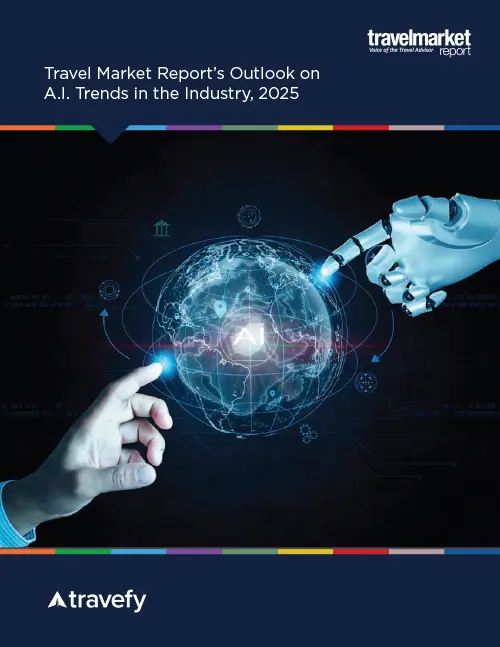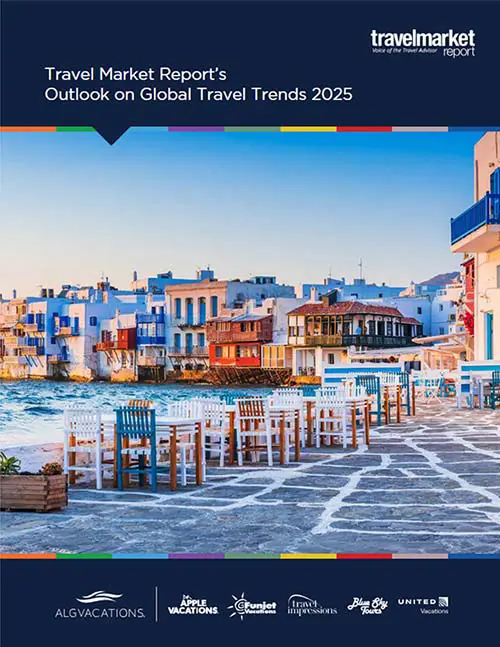What to Know About Brightline West: America’s Next Bright Idea?
by Lark Gould
Photo: Brightline West
Some say spotting a high-speed passenger train hurtling any time soon between Las Vegas and California will be more like seeing Sasquatch sauntering between cacti. Others say the concept is long overdue and ready to hatch.
For Brightline, the Fla.-based highspeed rail company that already has a working rail network answering demand for efficient passenger transport between Miami, Palm Beach, and Orlando (and points in-between), bets on the desert project are all in and it’s game on with high stakes wins and losses all around.
Brightline West has been a long time coming. Rail travel between Los Angeles and Las Vegas has been fraught with complications over the past 30 years. The highly subsidized Amtrack route across the Mojave stopped service in 1997 when the single-line track shared with slow-going freight carriages could not compete with all the low-fare flights emerging between the two destinations. Then there were environmental concerns – the desert tortoise, mountain lions, big horn sheep – and those concerns remain.
Where there’s a will, there’s a way
But what has changed are the will, the funding, the models in play and a car corridor that is becoming a parking lot as some 140,000 cars per day each way (up from 14,000 in 1999) make the 300-mile drive between the two cities. What was once a four-hour trip has turned into seven hours or more on many days.
“A few weeks ago, a journalist asked me: ‘Why can’t we have high-speed rail? We want high-speed rail.’ I said: ‘You sound like my boss.’ But my real answer was: ‘We can if we choose to.’ And now America has decided to,” said Secretary of Transportation, Pete Buttigieg, at the Brightline West launch press conference in Las Vegas in April.
As what could be called the train to the game, Brightline West broke ground last spring with much fanfare and a line-up of celebrated politicians wielding hammers for those fabled golden spikes. Privately held Brightline, headed up by billionaire investor and co-owner of the Milwaukee Bucks, Wes Edens, announced the beginning of a new era in, not only options for transport to the heavily visited neon gaming mecca from its primary feeder market but also a new day for rail technology and engineering – factors that have dogged the train concept in this corridor from taking shape. The company’s model veers from a focus on ticket sales to a focus on real estate around key transportation hubs, which tend to get built up and populated once the rail projects start running.
“This high-speed rail system will be transformative for our region, reducing traffic congestion on the I-15 and providing convenient access from our number one feeder market. We are grateful for the support of federal, state, and local leaders who helped bring this vision to fruition,” said Steve Hill, President and CEO of the Las Vegas Convention and Visitors Authority after the Nevada Department of Transportation (NDOT) awarded Brightline $3.75 billion of the projected $12 billion needed to build a high-speed rail line from outside of Los Angeles to Las Vegas.
The federal infusion all but promises that construction on the long-awaited project can get underway this year and, with crossed fingers, meet a 2028 deadline that will see the system running in time for the Olympics in Los Angeles.

Past failures
But this will not be the first time Nevada has seen this rodeo. In fact, hopes were high in the 1990s as a maglev project connecting Las Vegas to Anaheim were announced. That concept gave way in 2005 to the DesertXpress, which would have a terminal station in Victorville, California rather than Anaheim. But the DesertXpress failed to obtain federal backing and changed its name to XpressWest, with the hope of building a high-speed rail network connecting major western cities such as Denver, Salt Lake City, Phoenix, and Los Angeles, with Las Vegas. However, the idea of bringing high-speed trains to Nevada meant finding those trains – which were not made in the U.S. The federal funding required the trains to be made in America. Other challenges: engineering for the extreme weather and terrain, disappearing investors, an unconvincing projection of ridership between Victorville and Las Vegas, added to the doubts that this feat could succeed. Then, in 2018, DesertXpress was acquired by Brightline West.
In the meantime, Brightline was busy building its reputation and “tracks” record in Florida to link Miami with Ft. Lauderdale and West Palm Beach, adding tourism-saturated Orlando in 2023 and executing plans to link Tampa. While the routes were popular, mostly with leisure travelers, Brightline had to raise some ticketing rates by 250% to make up for some unexpected shortfalls. It’s a “get rich very slowly business”, Edens told a reporter from Forbes.
But the trains run on time in South Florida so far, and, for Brightline West, plans call for 218 miles of track to be placed along the I-15 drive corridor to hold trains that run up to 200 miles an hour. Those speeds easily cut the five-hour drive in half. While inked details are not dried, the train would run as frequently as every 45 minutes, be able to carry up to 1,200 passengers, and cost $400 for a roundtrip ticket. Airlines charge comparable rates, and take an hour in flight, but force passengers to wade through airport chaos and TSA regulations that often add two extra hours and unmeasurable stress to a trip.
The problem? You have to catch the train in Rancho Cucamonga. Where? The bedroom city some 37 miles east of downtown Los Angeles, sits on the confluence of Interstates 10 and 15 about an hour’s drive away during average traffic hours. Plans are to connect downtown Los Angeles with Ranch Cucamonga (and then Brightline’s other designated stations up to Las Vegas) through public Metrolink options. It turns out that Rancho Cucamonga does, indeed, have a Metrolink station and trains from downtown Los Angeles leave every one or two hours for the 90-minute commute. The intended high-speed train hub will add to the intermodal transportation station already in place in that community, located near Ontario International Airport.

If you build it…
Like any big project, you can build it but will they come? Las Vegas welcomed 40.83 million visitors in 2023. Nearly a third of those visitors are from Southern California. Value packaging, plush leather seats, snacks, Wi-Fi, low-hassle boarding, transfers and exiting, a relaxing ride through the desert at three times the speed of cars … it all adds up to a very attractive picture. Luring people out of their cars also means significantly less pollution along the route and the proposed station in Las Vegas would put arrivals on the South end of Las Vegas Boulevard close to hotels and shopping.
But the route is not a comfortable commuter line with regular riders built into the equation. Nor is it a seamless hop-on hop-off jaunt from one city to the other. It is a train that is boarded more or less in the middle of nowhere from a station that takes a good hour or two to reach from its intended populous origin point. Call it four hours and it may be a neck to neck competition with the plane.
Still, Las Vegas is the place where what does not seem possible becomes probable, and what does not seem rational suddenly makes sense. Brightline West has the will of Congress, the backing of major local governments, and a heavy wind at its back. High-speed rail travel in the American West may just be the next frontier.
























